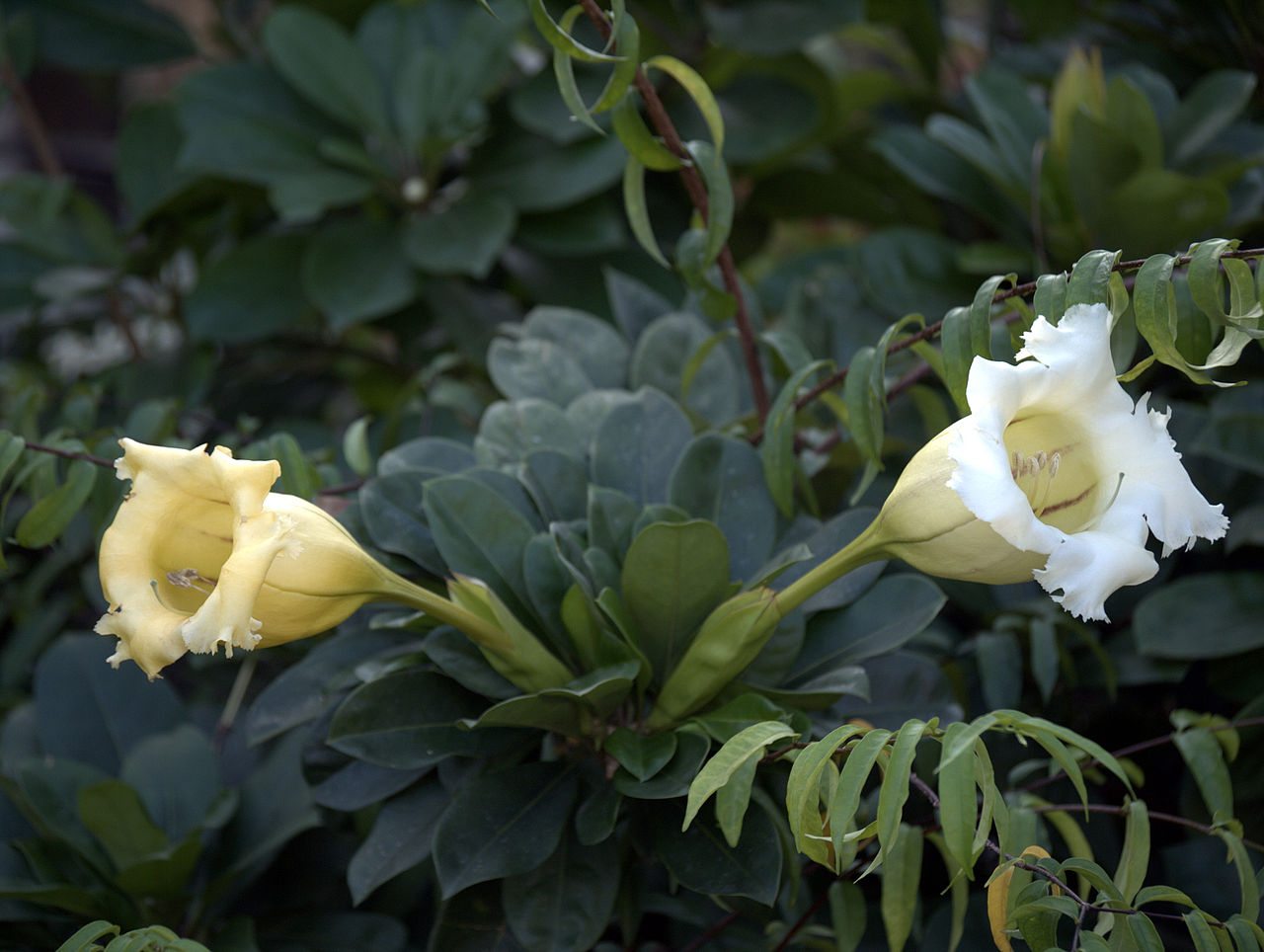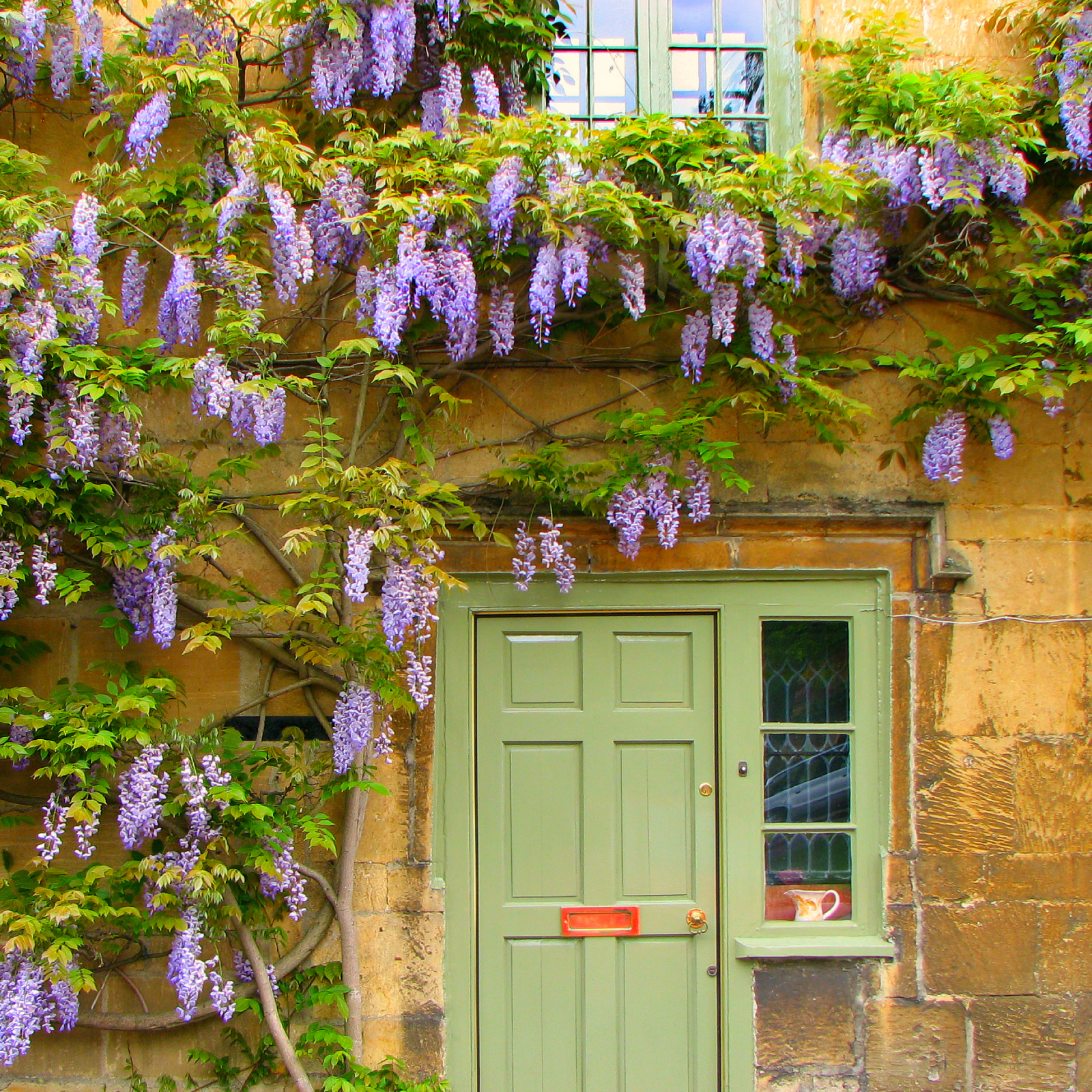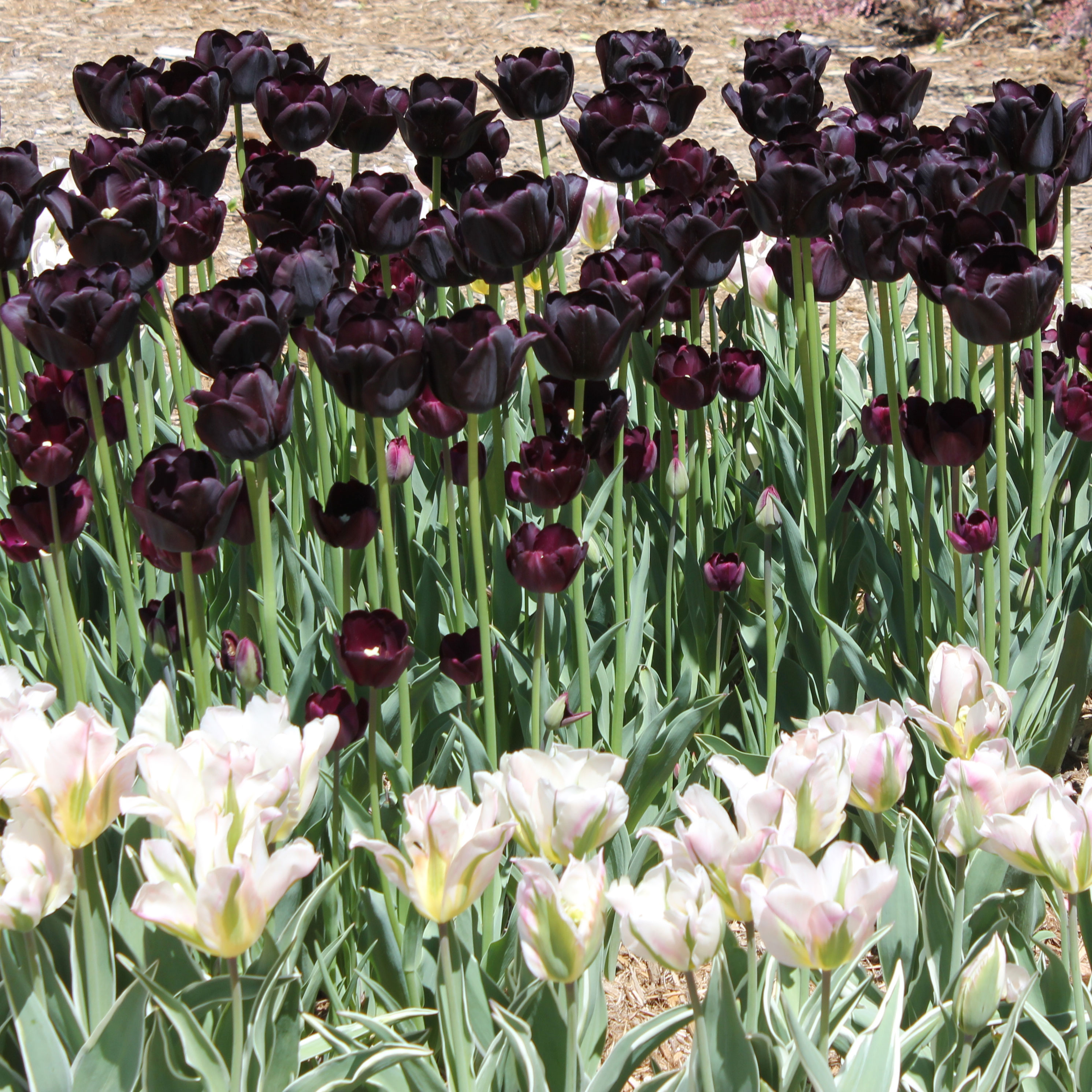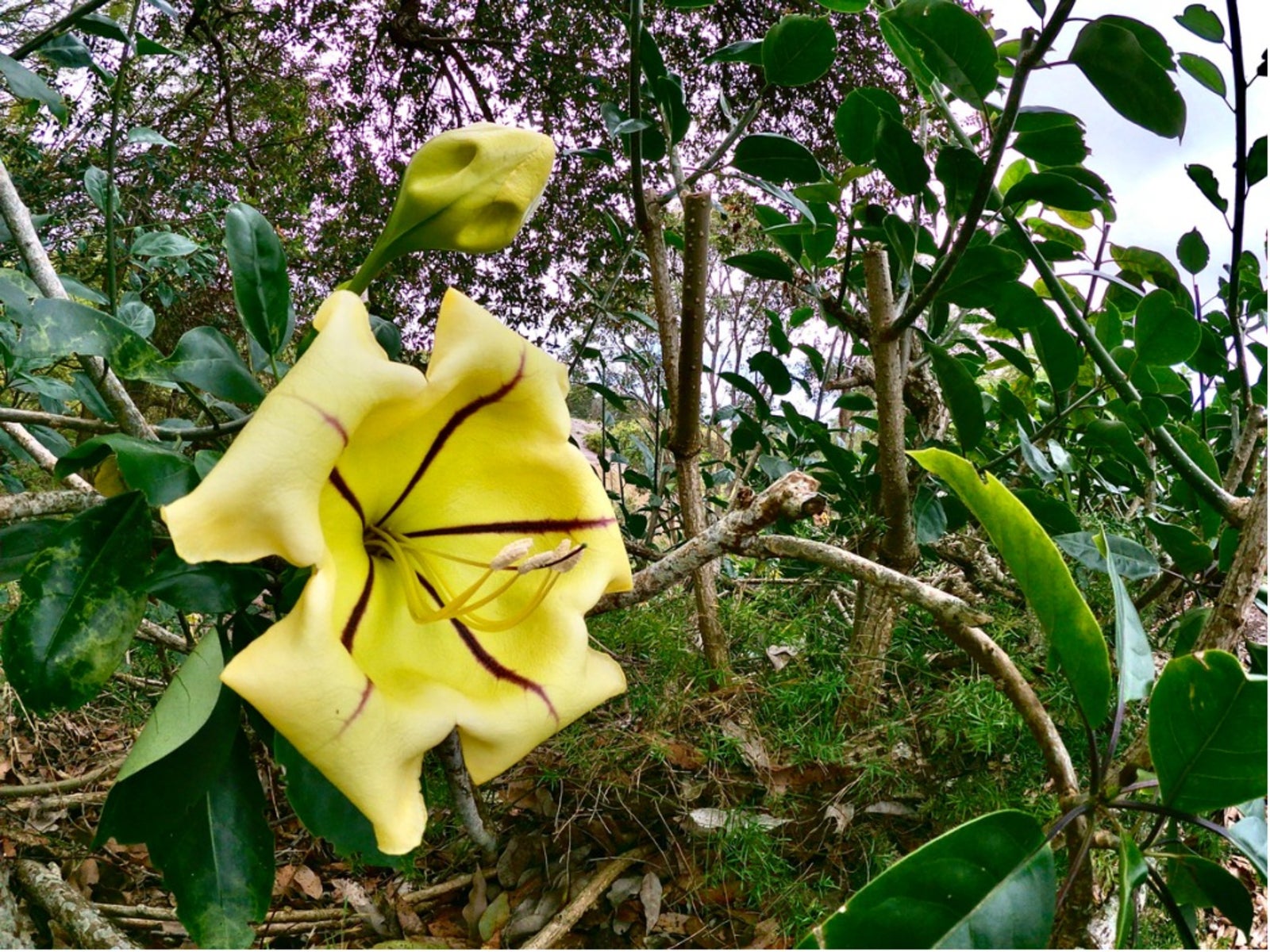Chalice Vine Pruning: When To Prune Chalice Vines


Once you’ve seen a chalice vine, you won’t need to ask how it got its name. Chalice vine is a thick stemmed vine, offering large, shiny leaves and amazing, yellow flowers that look like large, golden cups. Chalice vines are heavy, and you may need to consider chalice vine pruning if your trellis appears overwhelmed. How to cut back a chalice vine? When to prune chalice vines? Read on for all the information you need about pruning chalice vines.
Chalice Vine Trimming
Chalice vines produce huge, golden, bell-shaped flowers, each one up to 10 inches (25.5 cm.) long, with thick, leathery petals. The evergreen foliage is also heavy, each leaf some 6 inches (15 cm.) long. The vine grows fast in any soil with good drainage. As it gets longer, it can smother entire fences and weight down pergolas with vines that run to hundreds of feet. Chalice vine trimming may be the only way to keep the plant from becoming the garden bully. Before you jump into chalice vine pruning, take note of the toxicity of this plant. When you are pruning chalice vines, wear garden gloves and keep every part of the plant far from your lips. If you eat any part of the plant, you will get very unpleasant symptoms like nausea, vomiting, headache, and diarrhea. Ingesting the vine can also be deadly, so keep curious kids and hungry pets away. Touching the plant, then rubbing your eyes creates vision problems. The resulting blurred vision can last up to a week.
How and When to Prune Chalice Vines
These vines grow fast and furious during the warm season. You can trim them during these months as often as you need to keep control of the plant. The amount of chalice vine trimming you’ll need to do depends on the growth rate of your plant and the space you have reserved for it. How to cut back a chalice vine? Snip off however much you need to eliminate. The vine tolerates severe pruning. In winter months, when the weather is chillier, the growth rate of the chalice vine slows. You won’t need to be pruning chalice vines during this period. This works out well, since it is during the colder months that the plant produces most of its flowers.
Gardening tips, videos, info and more delivered right to your inbox!
Sign up for the Gardening Know How newsletter today and receive a free copy of our e-book "How to Grow Delicious Tomatoes".

Teo Spengler is a master gardener and a docent at the San Francisco Botanical Garden, where she hosts public tours. She has studied horticulture and written about nature, trees, plants, and gardening for more than two decades. Her extended family includes some 30 houseplants and hundreds of outdoor plants, including 250 trees, which are her main passion. Spengler currently splits her life between San Francisco and the French Basque Country, though she was raised in Alaska, giving her experience of gardening in a range of climates.
-
 Create A Romantic Garden Straight Out Of Bridgerton: Regency Era Romance In Your Garden
Create A Romantic Garden Straight Out Of Bridgerton: Regency Era Romance In Your GardenTry some romantic garden ideas straight out of Bridgerton. Flowers and gardens in the Regency era were lush and charming and you can get the same look!
By Bonnie L. Grant
-
 Moody Blooms For Spring: 8 Types Of Black Flowers To Add Drama To Spring Displays
Moody Blooms For Spring: 8 Types Of Black Flowers To Add Drama To Spring DisplaysFrom midnight burgundies to inky violets, several types of black flowers can enrich and embolden a spring display. Try these brooding bloomers for a moody garden
By Tonya Barnett
